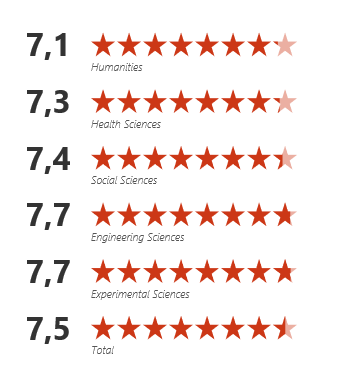86
July 2017
ARTICLES
Sixth survey of graduate employment outcomes - doctoral degree holders
Anna Prades Nebot and Daniel Torrents Vila
The fourth survey of the transition into employment (graduate employment outcomes) of doctoral degree holders from universities in Catalonia has just been completed (2017). In all of the four surveys, approximately 5,000 doctoral degree holders have been interviewed. In the latest survey, more than 50% of the reference population were interviewed, covering those awarded doctoral degree in the 2011-2012 and 2012-2013 academic years at the seven public universities and four of the five private (bricks-and-mortar and online) universities in Catalonia.
Table 1. Population, sample, response rate and sample error of the 2017 survey of the transition into employment of Spanish national doctoral degree holders
| Population | Sample | Response rate | Sample error |
|---|---|---|---|
| 2.545 | 1.358 | 53,4% | 1,85% |
The survey suggests findings that can be grouped under two broad headings:
- As regards employment, both the employment rate and employment conditions were good. The ratings of doctoral degree holders were higher than those of graduates (click here for the results). Having doctoral-level job responsibilities is closely associated with working at a university, a research institute or in industry and private enterprise. Industry and private enterprise is the sector where most doctoral degree holders were in employment (46%) and where there was the lowest proportion of doctoral degree holders with research-related job responsibilities (one should bear in mind that many medical PhD holders are employed as doctors in health facilities and hospitals). One positive aspect was a slight increase in the proportion of doctoral degree holders in industry and private enterprise with doctoral-level job responsibilities.
- With regard to training, on the basis of the survey it can be concluded that aspects of learning and training (such as writing the thesis either in a research group or independently, participation in seminars in and/or outside of the department, etc.) enhance skills development and thereby improve the employability of doctoral degree holders.
The main results are set out below. Detailed information can be consulted here.
Employment
The higher the level of education, the higher the activity rate and the employment rate. The following graph shows the trend in employment outcomes according to data from the Labour Force Survey for Spain (EPA).
Figure 1. Trend in the percentage of those employed, unemployed and inactive according to level of education (population aged 25-44, Labour Force Survey for Spain/EPA, first quarter of 2017)
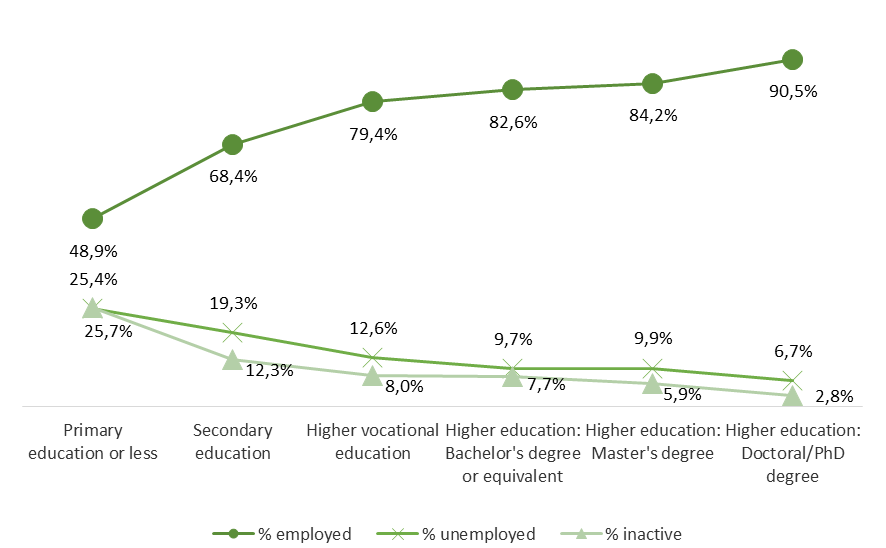
Using the data from the 2017 employment outcomes survey, a similar pattern for different employment indicators is evident. Investment in higher education courses is positive in terms of the transition to employment and work.
Figure 2. Comparison of indicators on the transition to employment according to the level of education (2017)
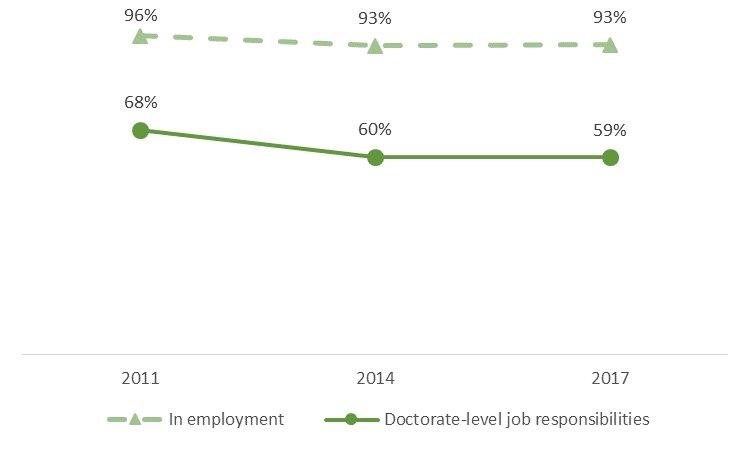
Trends in the employment rate, education/job skills match and employment conditions
There was no increase in the employment rate although it remained stable compared to 2014, with 9 out of 10 doctoral degree holders being in employment. The education/job skills match also remained stable, with 6 out of 10 having doctorate-level job responsibilities.
Figure 3. Trend in the employment rate of doctoral degree holders and the education/job skills match

There was an increase in the number of doctoral degree holders working in industry and private enterprise (accounting for 46% in 2017) and a drop in the number of those working in higher education institutions (34%). There were however important differences according to the various disciplines.
Figure 4. Place of work according to discipline (2017)
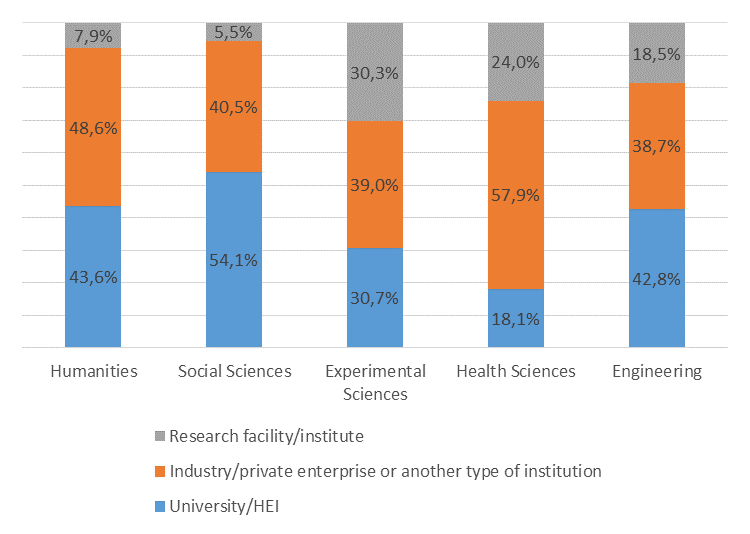
One interesting observation is that 1 out of every 3 doctoral degree holders working in industry and private enterprise had doctoral-level job responsibilities, which is a higher proportion than in 2014.
Figure 5. Trend in the number of doctoral degree holders with doctoral-level job responsibilities according to the place of work
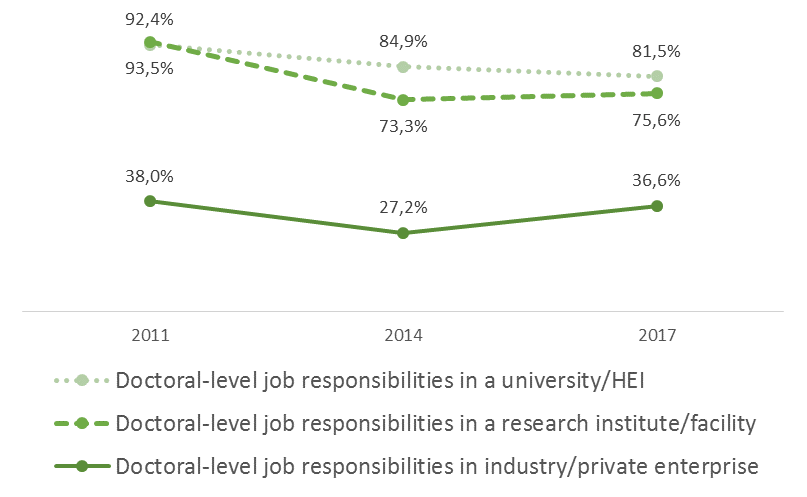
With regard to employment conditions, around half of all doctoral degree holders had an open-ended (indefinite) contract, which represents a slight increase compared to 2014, whereas the proportion of internships decreased by half. The proportion of those with temporary jobs remained similar to 2014.
Figure 6. Trends in the type of contract of doctoral degree holders
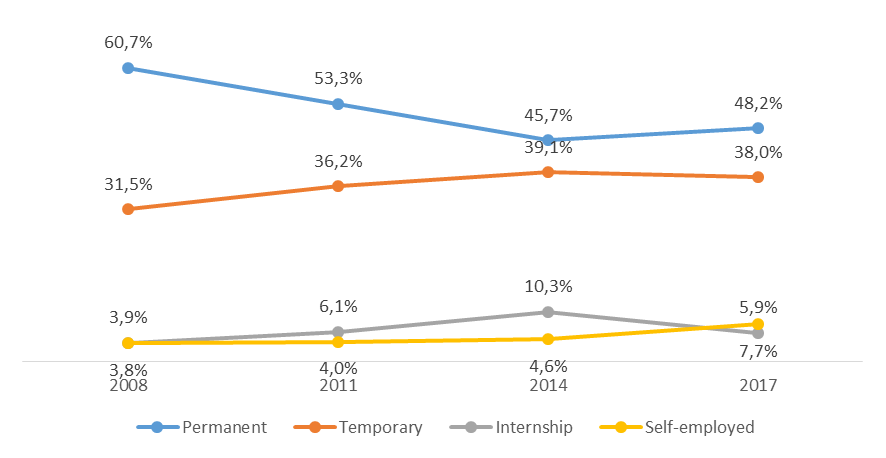
The great majority of doctoral degree holders were earning salaries of over 25,000 euros a year, with important differences according to discipline.
Figure 7. Proportion of doctoral degree holders with salaries of over 25,000 euros a year according to discipline (2017)
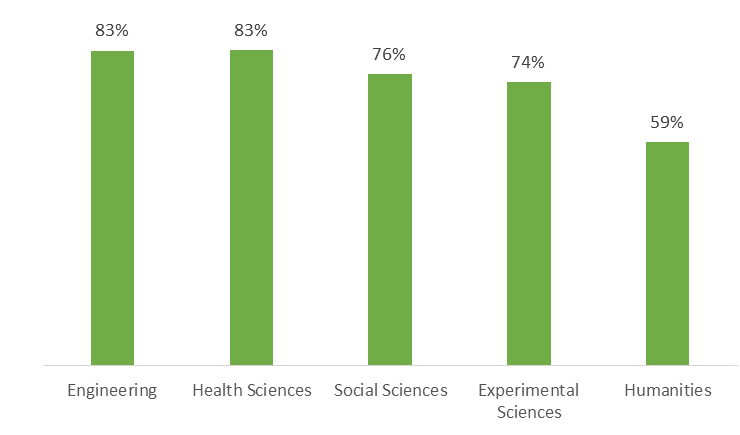
International mobility
7% of all doctoral degree holders were working abroad, which is half the corresponding number (proportion) in 2014.
Figure 8. Trend in the number (proportion) of doctoral degree holders working abroad
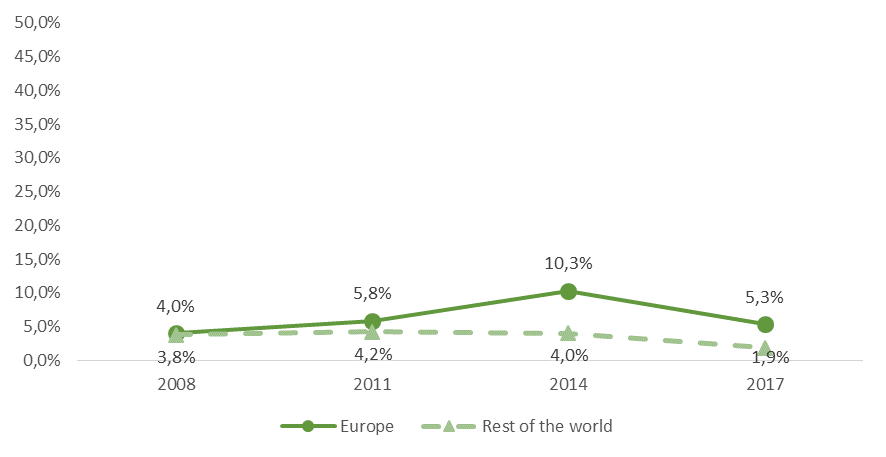
Skills development during doctoral studies
According to the survey, working in a research group leads to a significant increase in the acquisition of skills and competences and leads to students completing a doctoral degree in a shorter period of time. In spite of this, however, there was a decrease in the number of doctoral degree holders writing their thesis as part of a research group.
According to the questionnaire, the skill that best improves if a student writes the thesis as part of a research group is that of teamwork. As can be seen from the following table, working in a research group increases the development of this skill by more than one point (on a scale from 1 to 7), and it also improves through involvement in seminars in and/or outside of the department.
Figure 9. Increase in team working skills according to how the doctoral thesis was undertaken
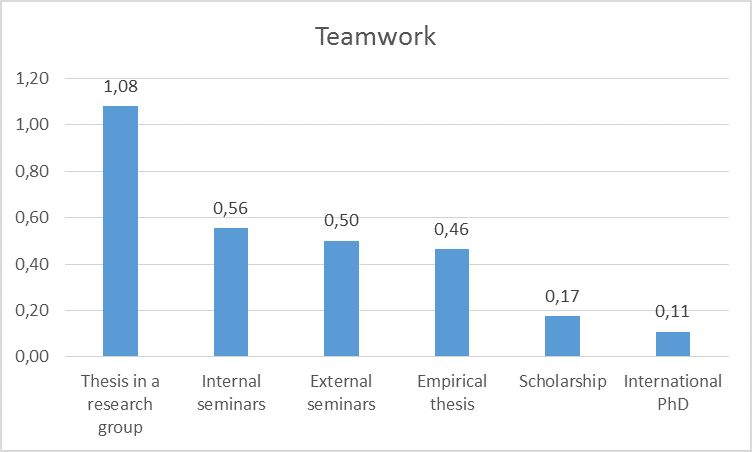
Involvement in external seminars increases the capability to write and publish scientific articles (on a scale from 1 to 7) by 0.67, compared to 0.46 when working in a research group.
Figure 10. Increase in the skill of writing and publishing scientific articles according to how the doctoral thesis was undertaken
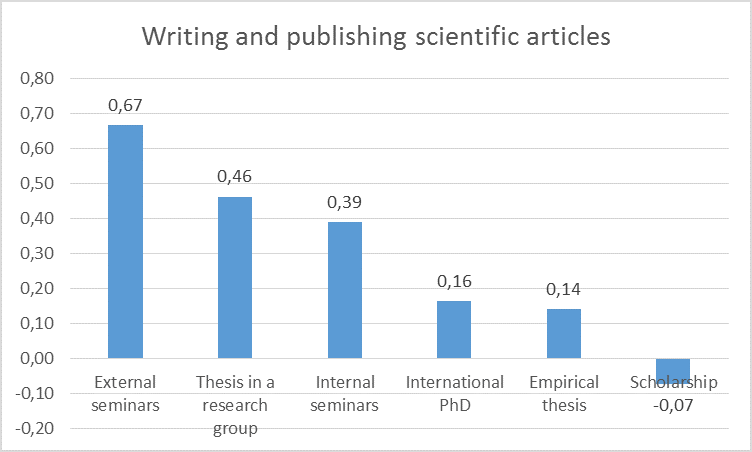
Nevertheless, the percentage of doctoral degree holders surveyed in 2017 who worked on their thesis while forming part of a research group decreased considerably compared to 2014.
Figure 11. Trends in the percentage of doctoral degree holders who were mainly part of a research group
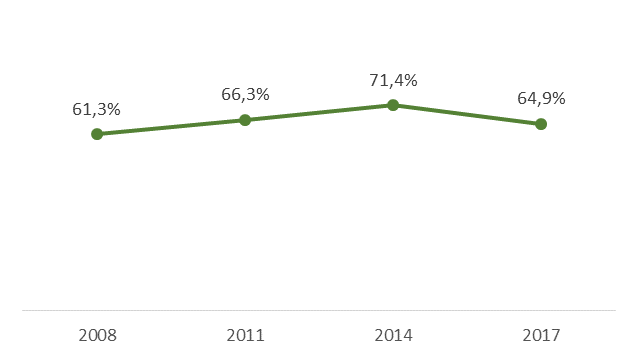
Satisfaction with doctoral degree studies
Even though 8 out of 10 would take the same doctoral programme again, there was a drop of 5% in those who would do so.
Figure 12. Trends in the percentage of doctoral degree holders who would take the same doctoral programme again
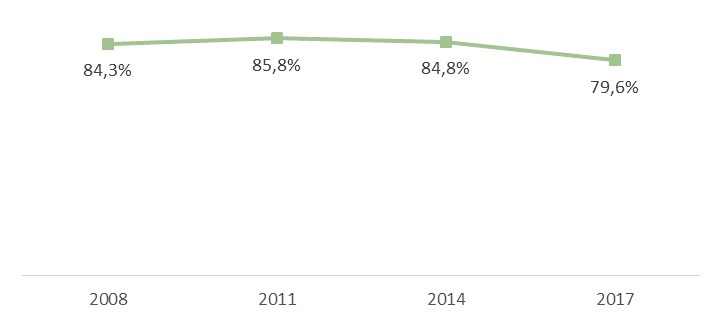
Foreign doctoral degree holders
Foreign doctoral degree holders, who accounted for 30% of the doctoral degree holders in Catalonia, rated their satisfaction with their doctoral programme as 7 out of 10. The general satisfaction rate of foreign doctoral degree holders was slightly higher than that of Spanish nationals, in all disciplines.
Figure 13. General satisfaction of foreign doctoral degree holders with their doctoral programme (2017)
